Summer vacation is coming to an end, which means it is time for parents to start acquiring what their children need for the upcoming school year. AppleInsider details the options available for iPads, including alternative options to the current Apple Pencil-equipped model.
Every year, technology increases its role in education, providing students with new ways to learn and work both during classes and at home. While in the olden days students would interact with computers in designated classes, education has progressed to a point where various forms of technology are introduced in practically every field, to the level that some schools hand out iPads to students to carry out assignments.
As one would expect, Apple has been involved in education for some time, and took time in March to showcase some iPad-related changes that it hoped would make the tablet one of the most valuable educational tools available. While this included new ClassKit APIs and a Schoolwork app that would make it easier for assignments to be produced in apps, Apple also showcased a new iPad with Pencil support that would be offered to education customers at a discount, and a cheaper alternative to the Apple Pencil.
While some schools will take advantage of Apple's software and iPad's features, parents may already be considering buying their child or student their own iPad, which could be used both during classes and at home. There are a few options available for those who want to take this route, with each having their own benefits.
2018 iPad
Probably considered the "obvious" answer, the latest iteration of the iPad is arguably the best Apple has ever produced, outside the iPad Pro range. Using the A10 Fusion processor used in the iPhone 7 and 7 Plus along with 2 gigabytes of memory, the iPad has more than enough power to handle practically any educational task that may be asked of it for a few years.
It has the usual 8-megapixel camera on the rear and 1.2-megapixel camera on the front, which can be used for 1080p and 720p video respectively, and a long ten-hour battery life that will last an entire school day. Even the screen will be familiar to most iPad users, with it having the same 9.7-inch size, 1536 by 2048 resolution, and 264ppi pixel density as last year's model.
The key addition this year is the inclusion of Apple Pencil support, which enables users to draw or write on the display. Able to recharge in seconds by being plugged in to the iPad's Lightning port, the Apple Pencil offers pressure and angle sensitivity, useful for shading in drawings in art class, while also allowing for notes to be written on the screen without getting out a keyboard or tapping uncomfortably on the screen for long periods.
While useful, the Apple Pencil does considerably increase the overall cost if bought with the 2018 iPad, raising the base iPad's price tag of $329 by $99, bringing the retail cost up to $428 as a package. Taking into account that the Apple Pencil may not be that useful for younger users than older students and that it is an expensive stylus for a child to lose, it isn't an essential accessory to have.
That being said, there's nothing stopping anyone from buying the 2018 iPad on its own, then at an appropriate time later on, purchasing the Apple Pencil. The iPad will work fine without it, but the option to extend its functionality will always be there.
2017 iPad
If the basic functionality of an iPad is all that's required, without the need for everything that Apple Pencil support offers, another option is to buy the previous year's model.
The 2017 iPad is very similar to the 2018 version in a lot of ways. It has the same screen size and resolution, front and rear cameras, and ten-hour battery life. It even has the same physical dimensions and thickness as the latest model, which means it will be able to use the vast majority of cases that also work with the 2018 iPad, and even older models.
The main difference, aside from Apple Pencil support, is performance. While the 2017 iPad has a dual-core 1.85GHz A9 processor with M9 motion co-processor, the 2018 model uses the A10 Fusion with M10, clocked at up to 2.22GHz. In terms of performance, there is a 28 percent difference in single-core performance between the two, rising to 33 percent in multi-core benchmark tests.
Even though the 2018 is more powerful, at this time it will only be a factor for processor-intensive tasks like gaming, whereas the requirements for most educational apps and tasks, such as watching a video, are far more pedestrian. Most users won't care that much about the slightly slower speeds, as it won't affect them the vast majority of the time.
As a reminder, going for the 2017 iPad instead of the 2018 will also mean that the Apple Pencil can't be used with the tablet further down the road. If you want to use a stylus with it, there are a few third-party offerings on the market that will provide some of the Apple Pencil's pressure-sensitive functionality, but it will be unlikely to match up to Apple's own peripheral.
10.5-inch and 12.9-inch iPad Pro
While the 2018 iPad offers a lot, some may feel that paying out for higher performance now would be a good idea, especially as a form of future-proofing for later in the student's educational career. The only place you can turn to if you want a better iPad than the 9.7-inch iPad is to look at the iPad Pro range.
For a start, the iPad Pro range has larger screens than the iPad, upgrading the 9.7-inch Retina for 10.5-inch and 12.9-inch Retina screens, with resolutions of 2224 by 1668 and 2732 by 2048 respectively. Despite being larger, they have the same pixel density as the standard iPad, measured at 264ppi.
The bigger surface area provides a larger workspace, which is handy if the Apple Pencil is being used extensively during classes. Even handier, the ProMotion technology can increase the refresh rate up to 120Hz when using an Apple Pencil, giving more of an effect of drawing on paper, as well as the True Tone automatic color adjustments based on the local environment, which keeps the image from changing too much to the user as they move around.
An obvious difference is the change in performance, with both iPad Pro models using the more advanced hexa-core A10X Fusion with M10 clocked at 2.39GHz paired with 4GB of RAM, double the memory of the iPad. In benchmarks, this equates to a marginal 20-percent improvement in single-core performance, rising to a 58-percent difference for multi-core tests.
Despite the difference in core counts, the unclear nature of how iOS employs symmetrical multiprocessing for day-to-day use, and the relative closeness of single-core performance means there won't be much of a difference between the models in everyday usage. For multitasking and applications that need as much processing power as possible, the iPad Pro pair will almost certainly do the job better than the iPad.
Apple has also ensured the cameras in the iPad Pro line are better than the iPad, with the two equipped with 12-megapixel f/1.8 cameras with optical image stabilization and a quad-LED True Tone flash on the back compared to the flashless 8-megapixel version on the iPad. The Pro models also include the ability to record 4K video while the iPad is limited to 1080p, and are able to provide slow motion recording at a higher frame rate or a better resolution.
It's a similar story for the front, where the 1.2-megapixel iPad Pro FaceTime HD camera capable of 720p video is switched out for a 7-megapixel model capable of 1080p video.
While the iPad has a pair of speakers for stereo sound, the iPad Pro line uses four, with one in each corner allowing for the left and right channels to appear from the correct sides, regardless of the iPad Pro's orientation.
Overall, both the 10.5-inch and 12.5-inch iPad Pro offer more to users than the 2018 iPad from performance, size, and specification standpoints. The question for potential owners is whether the price difference is worth the upgrade.
The smaller iPad Pro starts from $649 for the 64GB model, almost double the cost of the base 32GB 2018 iPad, while the base 64GB 12.9-inch version costs $799. This is also before factoring in the $99 needed for the Apple Pencil across all three tablets, which does make the percentage difference between the models slightly smaller. These are retail prices, however, and many Apple authorized resellers offer instant rebates on both iPad and iPad Pro models.
iPad mini 4
The famous phrase "size isn't everything" shouldn't apply to iPads, but in the case of the iPad mini 4, it does. The iPad mini 4 is the smallest device in the iPad range, equipped with a 7.9-inch Retina display that has the same 2048-by-1536 resolution as its larger stablemates, and as the most compact and lightest model, this makes it a great candidate for younger users who may find the bigger iPads a bit unwieldy.
The problem is that the small size is the only real draw for the iPad mini. It is equipped with the A8 processor, a fairly underpowered chip when compared to the current-generation iPad which Apple itself says is approximately twice as fast, with 2.7-times faster graphics.
The iPad mini 4 is equipped with the same 8-megapixel camera as the iPad, and shares the same imaging functionality, aside from being able to take Live Photos, and an identical 1.2-megapixel FaceTime HD camera. The video capabilities are also the same, with 1080p video and 720p slo-mo video at 120fps for the rear, and 720p video for the front.
It is also the only iPad outside the current-generation range offered by Apple that does not include support for the Apple Pencil.
As an entire package, the iPad mini 4 is hard to recommend, except for anyone who places a premium in having as compact a tablet as possible. The screen estate suggests it is a device for content consumption rather than creation, as afforded by the bigger display of all other models, which does not lend itself to education.
The Wi-Fi version of the iPad mini 4 is currently only offered as a 128GB model and retails for $399. By comparison, this is just $30 cheaper than the 2018 iPad with the same storage capacity, which isn't much of a saving considering the lower performance and smaller screen size.
Educational Pricing
Before you buy your iPad of choice, make sure to check out discounts available on Apple's line of iPads. While Apple does offer discounts to schools and educational institutions, such as $299 for the 32GB iPad instead of $329, there are also savings to be had for everyone, not just students, teachers and school employees.
At Apple, there is an authentication process for the education discount to ensure that the person buying the device should have the discounted goods. While this does vary between countries, it typically involves providing proof of status, such as using a college-assigned email address, before being able to buy the goods.
For the most part, however, the greatest savings can be found at Apple authorized resellers. There's no authentication process, as the offers are available to everyone, not just students and faculty. The AppleInsider Price Guides listed below provide shoppers with a price comparison tool to see current deals and discounts across various retailers. In addition to instant rebates of up to $250 off, many retailers also offer free shipping and do not collect sales tax in most states, for even greater savings.
The guides are not limited to iPads, as other Apple products like MacBooks are also on sale, so it's worth checking out deals on additional devices that can assist with schoolwork and other assignments. Current discounts reach up to $250 off 2018 MacBook Pro models and up to $1,600 off closeout configurations. If you're on the fence about whether you need an iPad or a Mac for school, be sure to check out the first installment in our 2018 Buyers Guide series: Should you pick Apple's iPad or Mac for college? for more information.
iPad Price Guides
 Malcolm Owen
Malcolm Owen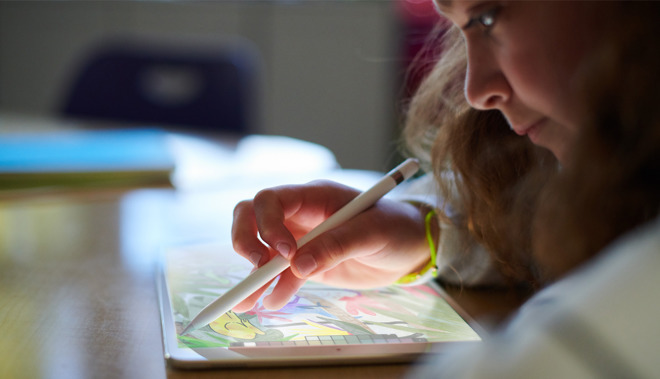
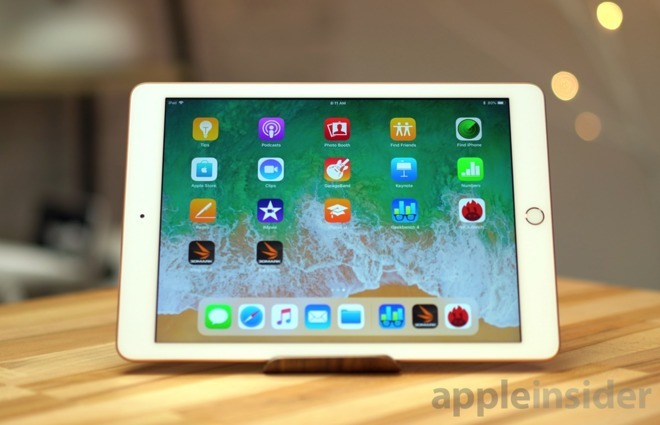
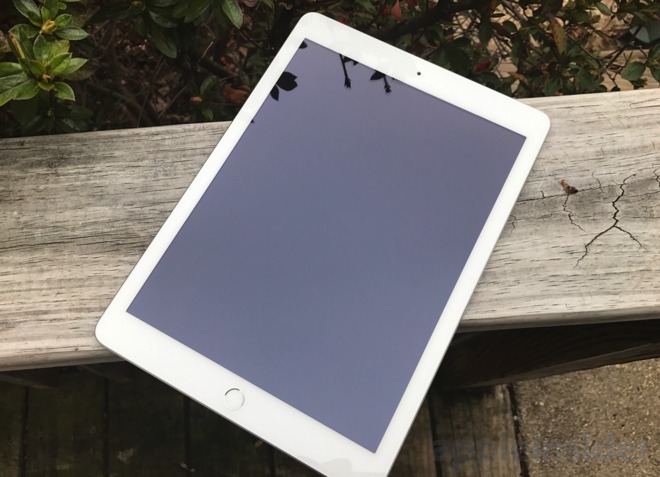


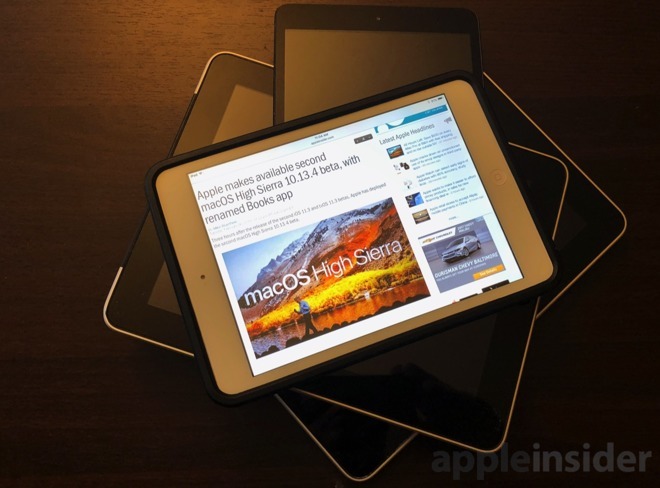
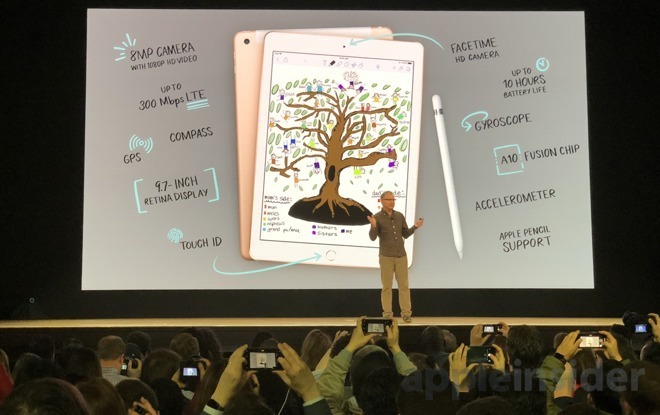







-m.jpg)





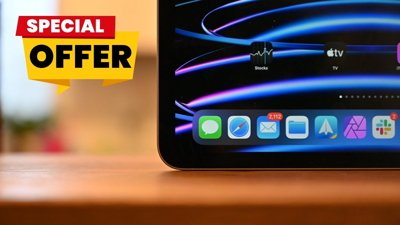
 Christine McKee
Christine McKee


 Charles Martin
Charles Martin


 Mike Wuerthele
Mike Wuerthele

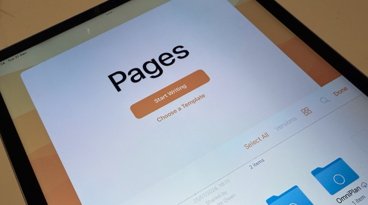
-m.jpg)






4 Comments
All in all though, it's a great multi-use product!
Mini 4 is perfect for my 2.5 yr old with a very thick foam case with handles and a screen protector. Apple should have updated this model by now!